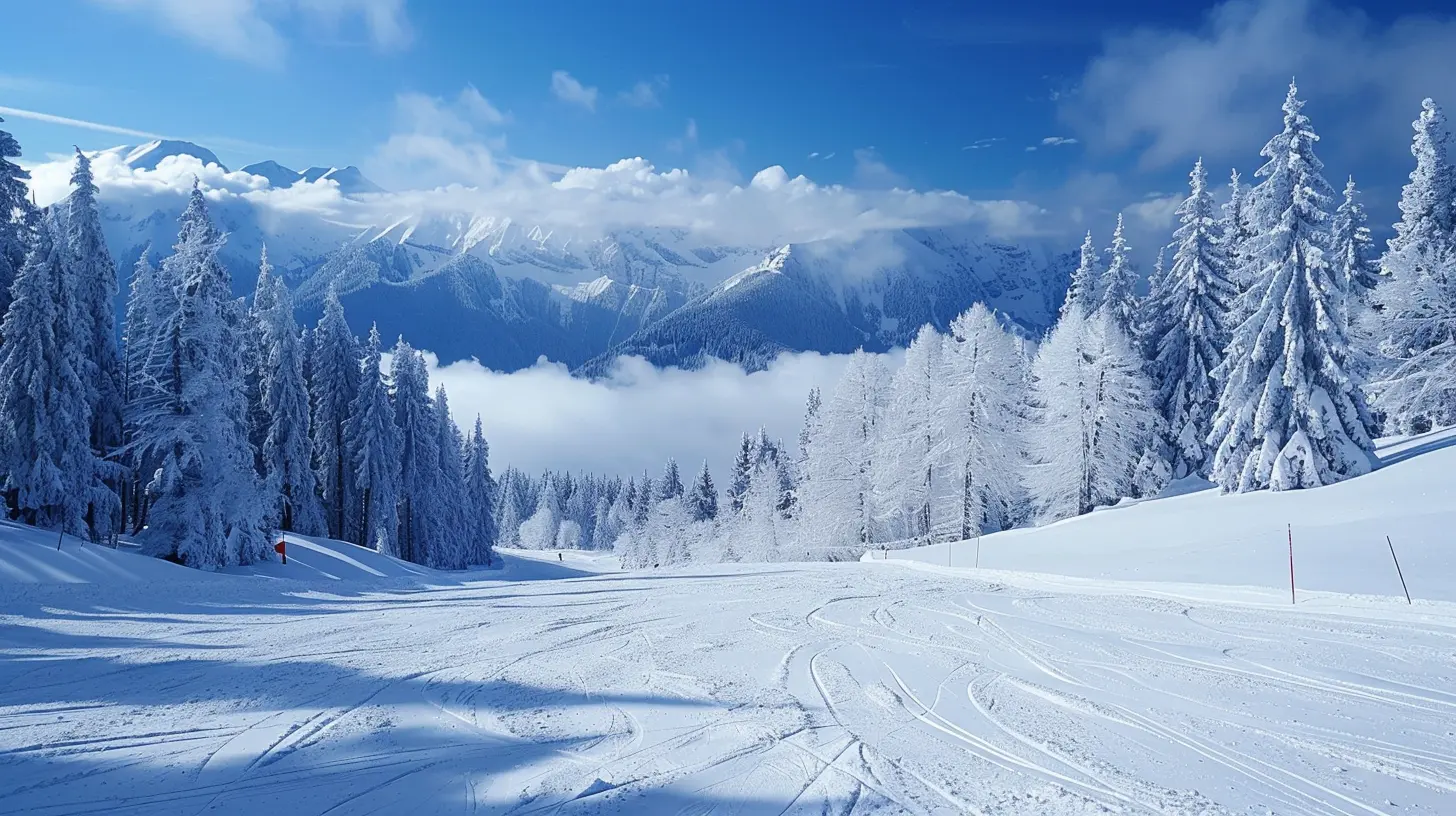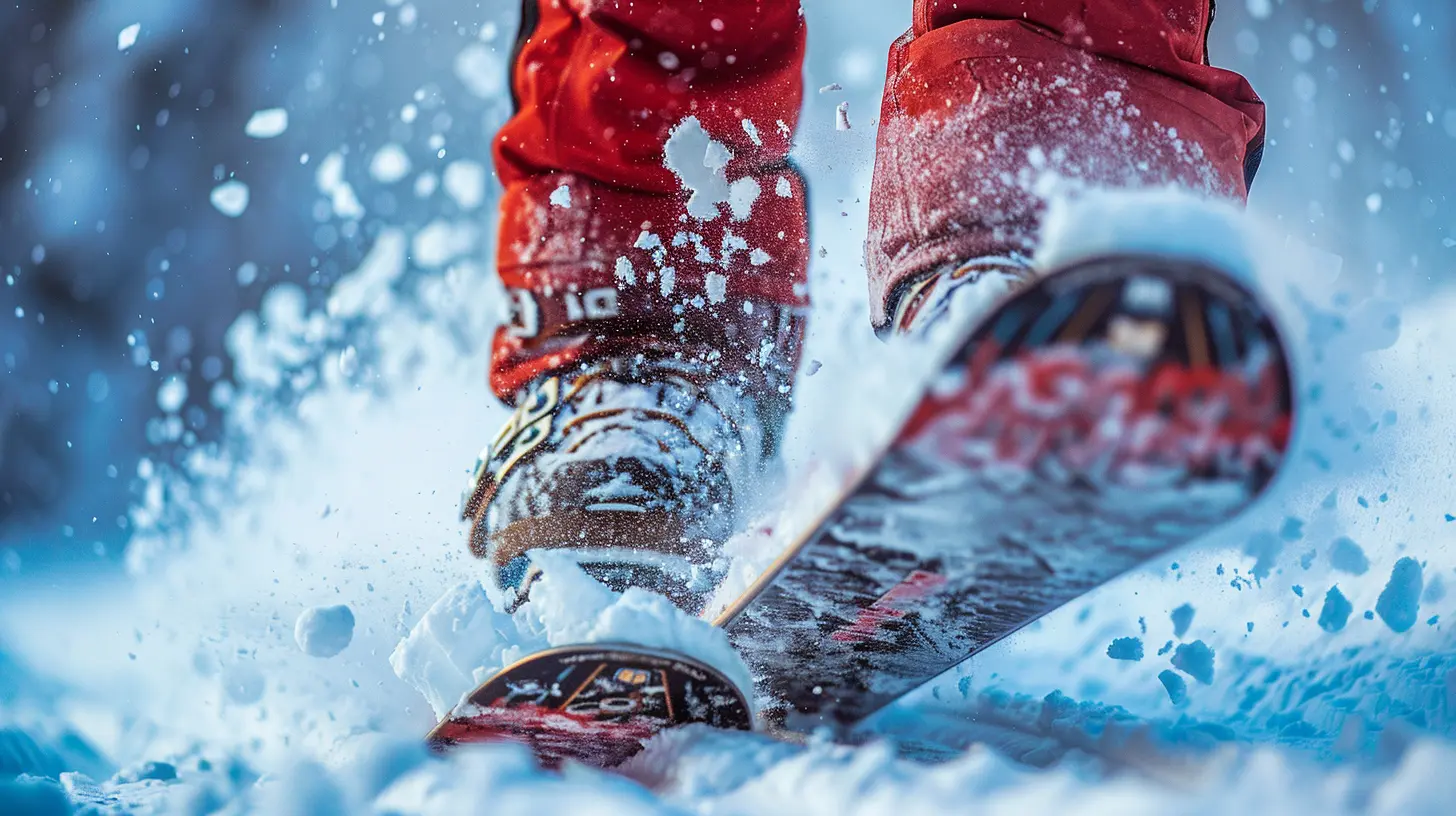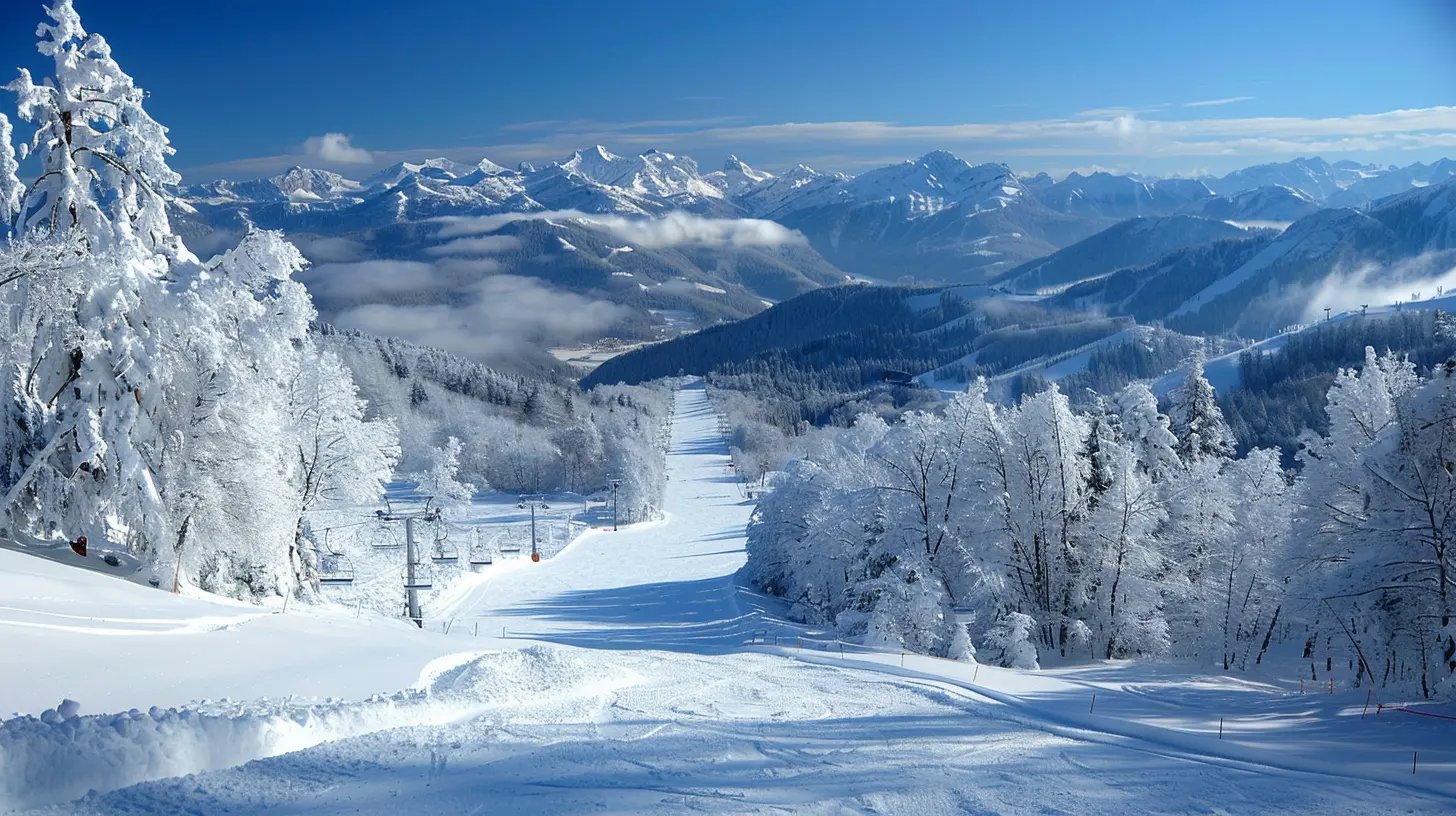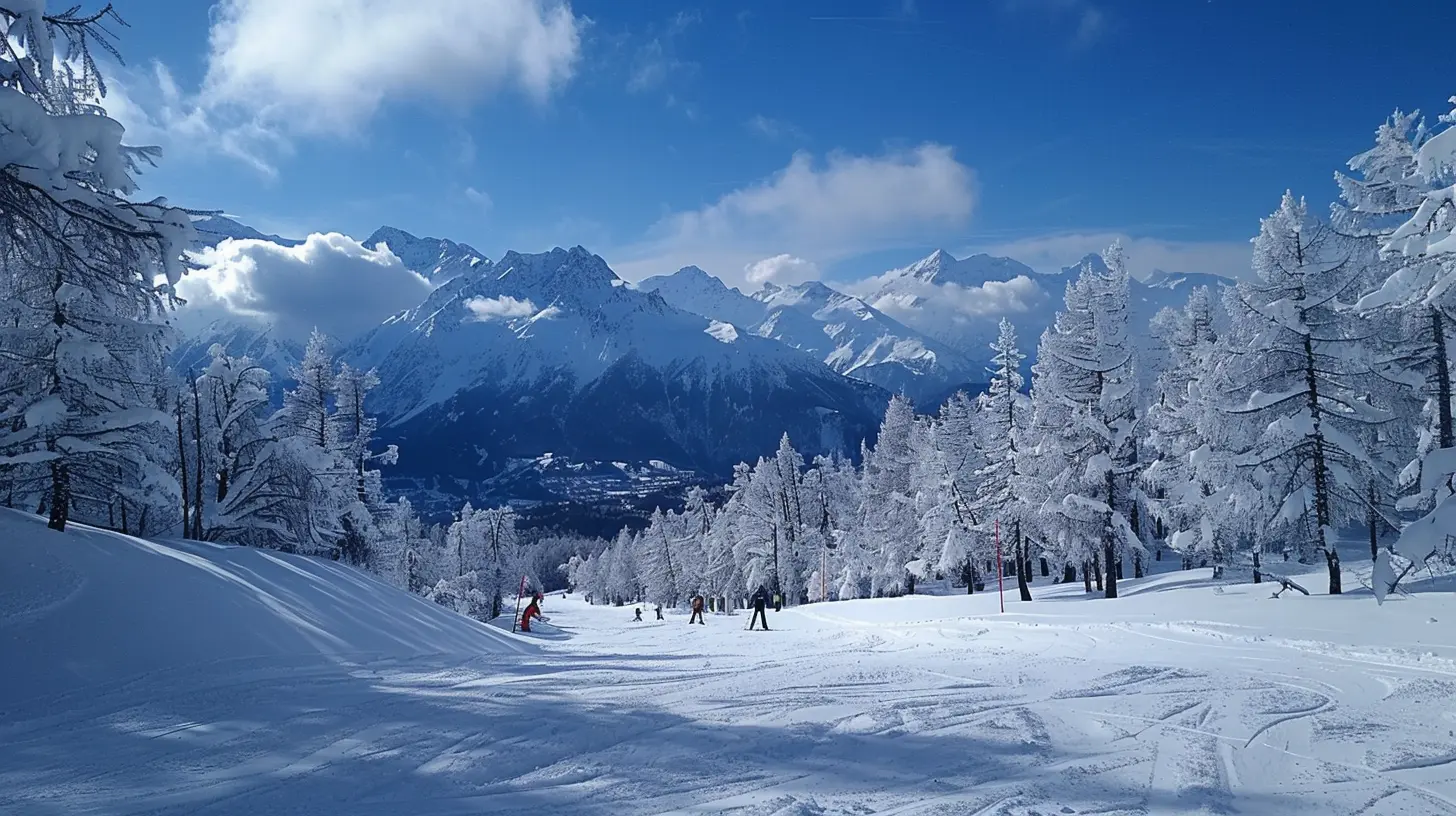Understanding Snow Conditions and How They Affect Your Skiing
22 May 2025
When you're out on the slopes, every turn, jump, and carve is influenced by one key factor—snow conditions. Whether you're a beginner or a seasoned pro, knowing how different types of snow affect your skiing can make a huge difference in your performance and overall experience.
So, what exactly are snow conditions, and how do they impact your ride? Let’s break it down so you can glide down the mountain with confidence.

Why Snow Conditions Matter
Snow isn't just snow—it's a complex, ever-changing surface that reacts to temperature, humidity, and even skier traffic. The way your skis or snowboard interact with the snow will influence everything from speed and control to the effort it takes to turn or stop.Imagine trying to ride a bike on wet pavement versus dry pavement. The grip, control, and even your comfort level change completely. The same goes for skiing in different snow conditions.
Now, let’s dive into the most common types of snow you’ll encounter on the slopes.

Types of Snow and How They Affect Your Skiing
1. Powder Snow – The Skier’s Dream
Ah, powder—the holy grail of snow conditions. Powder snow is fresh, untouched, and light, making it a favorite among skiers and snowboarders. It feels like floating when you ski on it, offering a smooth and forgiving ride.How It Affects Your Skiing:
- Provides a cushioned ride, making falls less painful- Requires a more upright skiing stance to maintain balance
- Wide skis or powder skis work best since they help you stay on top of the snow
- Can be challenging for beginners since turning requires more effort
Skiing in deep powder is exhilarating but can also be exhausting. If you’re not used to it, your legs will feel the burn quickly!
2. Packed Snow – The Everyday Favorite
Packed snow is the result of freshly fallen snow being compressed by skiers, snowboarders, and grooming machines. It’s the most common type of snow on ski resorts.How It Affects Your Skiing:
- Offers great edge grip, making it ideal for carving- Easier to control your speed and direction
- Good for all skill levels
- Can become icy if over-skied or exposed to the sun and then refreezes overnight
If you’re new to skiing, packed snow is your best friend. It gives you enough grip without being too challenging to maneuver.
3. Icy Snow – The Slippery Challenge
Icy conditions occur when packed snow melts and refreezes, turning the surface into a hard, slippery sheet. It’s the least favorite condition for most skiers, but it’s something you'll likely encounter at some point.How It Affects Your Skiing:
- Requires sharp edges on your skis to maintain control- Turns become more difficult since there’s less grip
- Falls can be more painful due to the hard surface
- Speed naturally increases because of the lack of friction
If you're skiing on icy slopes, stay balanced, keep your movements controlled, and avoid sudden, sharp turns. It’s all about staying relaxed and letting your edges do the work.
4. Slushy Snow – Springtime Skiing
As temperatures rise, snow starts to soften, creating slushy conditions. Think of it like skiing through a snow cone—it can be slow and heavy but also a lot of fun if you know what to expect.How It Affects Your Skiing:
- Slows you down, which can be good for beginners- Requires more effort since the snow is wet and heavy
- Can create uneven patches, making balance a bit tricky
- Best skied with a relaxed, reactive stance
Spring skiing in slush can feel weird at first, but once you get the hang of it, it’s a blast. Plus, who doesn’t love skiing in the sunshine?
5. Crusty Snow – A Mixed Bag
Crusty snow happens when a layer of soft snow forms underneath a hard, frozen surface. It’s unpredictable and can be one of the trickiest conditions for skiers.How It Affects Your Skiing:
- Causes unexpected shifts as your skis break through the crust- Requires strong legs to power through the resistance
- Makes turning inconsistent—some areas may be hard, while others may be soft
- Best handled with confidence and a firm stance
If you ever find yourself on crusty snow, stay light on your feet and be prepared for sudden changes in resistance.
6. Wind-Blown Snow – The Unexpected Hazard
Wind can dramatically shape the snow conditions on a mountain. Wind-blown snow can create hard-packed ridges or pockets of powder, making the terrain inconsistent.How It Affects Your Skiing:
- Can create unexpected deep spots that throw off your balance- Hard-packed areas may feel like ice and require careful edging
- Requires constant adjustments in your skiing technique
When the wind has had its way with the slopes, expect the unexpected. It’s all about staying adaptable and reading the terrain as you go.

How to Adjust Your Skiing Technique for Different Snow Conditions
Now that you know how different snow types affect your skiing, let's talk about adjusting your technique to handle them like a pro.1. Stay Balanced
Your skiing stance should always be slightly forward, with your knees bent and your weight distributed evenly. This helps you stay in control, no matter the snow type.2. Use the Right Gear
The right equipment can make all the difference. Wider skis help in powder, while sharp edges help on ice. If you're skiing in varied conditions, consider all-mountain skis that perform well across different surfaces.3. Read the Terrain
Look ahead and anticipate the changes in snow conditions. If you see a patch of ice coming up, prepare by engaging your edges early. If you're about to hit slush, keep your movements fluid and relaxed.4. Adjust Your Speed
Some conditions require a bit more speed to maintain control (like crusty or slushy snow), while others (like ice) require a more measured approach to avoid sliding out.5. Stay Relaxed and Go with The Flow
Tensing up when conditions get tricky only makes things harder. Keep your body loose, breathe, and trust your skills. Skiing is supposed to be fun, after all!
Final Thoughts
Snow conditions can make or break your skiing experience, but with the right knowledge and mindset, you can adapt and enjoy every run. Whether you're floating through powder, carving on packed snow, or navigating icy patches, understanding how different snow types affect your ride will help you become a more confident skier.So next time you hit the slopes, take a moment to feel the snow beneath your skis. The better you understand it, the more fun you’ll have!
all images in this post were generated using AI tools
Category:
SkiingAuthor:

Onyx Frye
Discussion
rate this article
3 comments
Storm McFarlin
“Embrace the mountain's voice! Understanding snow conditions is your key to unlocking unforgettable skiing adventures. Whether it’s powder, crust, or slush, each surface demands respect and skill. Equip yourself with knowledge, adapt with confidence, and let every run transform into a thrilling journey. Conquer the slopes and elevate your passion!”
June 1, 2025 at 7:51 PM

Onyx Frye
Absolutely! Understanding snow conditions is essential for maximizing your skiing experience and safety. Each type of snow offers unique challenges and thrills, so embrace the learning process and enjoy every descent!
Jocelyn Horne
Snow conditions can be as fickle as a cat on a hot tin roof! Just remember: if it’s slushy, your ski skills might need a little more polishing than your goggles!
May 31, 2025 at 2:26 AM

Onyx Frye
Absolutely! Snow conditions can indeed change quickly, and adapting your skills to varying conditions is key to a great skiing experience.
Hope Elliott
Understanding snow conditions is crucial for skiers. Different textures—powder, packed, or icy—impact speed, control, and safety. Knowledge of these factors can enhance your overall skiing experience.
May 25, 2025 at 12:15 PM

Onyx Frye
Absolutely! Understanding snow conditions is key to optimizing performance and safety on the slopes. It can truly elevate your skiing experience.



